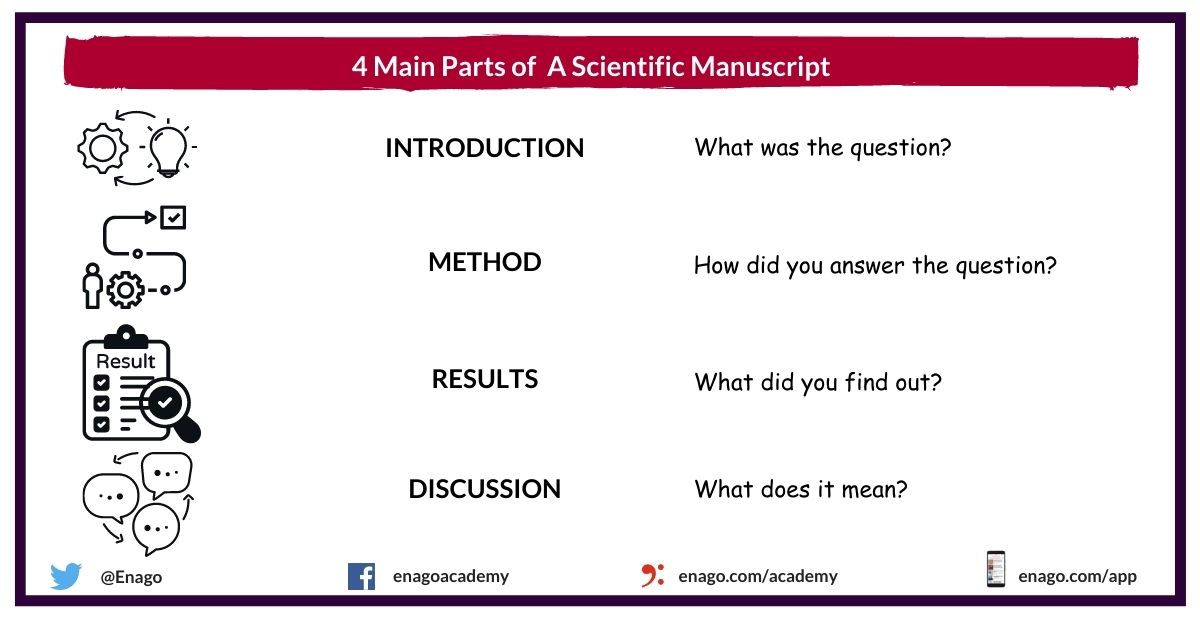5 Exemplary Tips for Writing Your First Scientific Manuscript

As an early career academic, getting your first scientific manuscript published is a crucial milestone. However, the process of learning how to write your first manuscript, submitting it to the target publishing platform, and then successfully publishing your scientific work can be long and arduous.
It’s a difficult work, but planning and organizing things will help. Here are some tips for writing your first scientific manuscript and help you get your work accepted for publication.
5 Tips to Easily Write Your First Scientific Manuscript:
To write a scientific manuscript, the first thing you need is to be consistent. Given the challenges that may arise in this journey, even the best minds can get stuck easily. Thus, in such situations, authors must evaluate the purpose of their writing and then plan and structure their work accordingly.
Researchers write manuscripts to share their original ideas and recent discoveries with both the scientific community and the general public. Even though manuscripts have a strict format and structure that needs to be followed in order to get accepted for publication, there is still room to create an appealing story that communicates science while still being fun to read.
Here are a few tips to help you get started with writing your first scientific manuscript.
1. Select a Topic and the Right Journal:
Although you may begin writing your manuscript with one topic in mind, it may deviate from the initially thought idea or concept. It is possible to get confused after collecting the data, and you may not be satisfied with the topic in earlier days. This first stage may be an iterative process for all of these reasons and more. However, to avoid this obstacle, list down a few titles first and later decide which one to proceed with.
Step 1- It is recommended to begin the process by collecting data from different researches, books, internet platforms, other resources that deem ideal for your topic of interest.
Step 2- Then think about who would be most interested in that idea and select the proper target Journal.
Step 3- Be clear with your concepts and topic whilst searching for the right Journal. Furthermore, you must consider your audience too.
2. Familiarize Yourself With Journal Guidelines
Once you’ve decided on a journal, check their submission guidelines. It is better to always refer to journal guidelines as journals may revamp their guidelines to streamline the submission and article processing for authors as well as editors.
These guidelines are comprehensive and hence can be a time-consuming process; however, being thorough with it will save you a lot of time and effort later during the review process and also save your manuscript from getting rejected in the screening process.
3. Start Writing Your Manuscript:
You can begin writing once you’ve confirmed that your manuscript falls within the scope of the Journal. Don’t wait until your research is over to start writing; keeping taking notes and documenting everything while you’re still in the lab or out in the field. Begin with writing the Methods section as you conduct the study.
You can even make dummy tables with column and row titles; all you have to do now is insert the values into the relevant cells as your data comes in.
Composing continuous text is a challenging aspect of writing as it requires careful attention to grammar and syntax—which is why it aids in the creation of a framework, much like an architect prepares a blueprint before beginning the construction of a building.
Outlining will help you organize your work logically, which is critical in writing a manuscript.
One of the best tips for writing a manuscript is to use shorter sentences, uniform language throughout to discuss the content of your research Your job will be easier if the target journal uses the IMRaD format. However, you still need to divide your manuscript into subheadings as required under the four main headings: Introduction, Methodology, Results, and Discussion.

If your Journal lacks a set structure, you’ll need to develop relevant primary headers and arrange them in proper order.
You can collate information from different sources and rephrase them i.e. write them in your own words, but this doesn’t often work and might be plagiarized. Hence, it is recommended to use plagiarism checkers and detectors to avoid the malpractice of plagiarism.
You can add the following headings in your manuscript to convey your study constructively.
-
Introduction Section:
The Introduction section is distinctive because it is perhaps the most self-contained section of the article. You can discuss your study and its significance. What is the scope of your research? What is your research hypothesis, research gap, or research question?
This introductory section may help you draw conclusions that you’d like to discuss later in your manuscript.
-
Methodology Section:
What methodology did you use in your research? Each technique should include necessary details. Include a cover on ethical approval if your study involves animal or human subjects.
Generally, this is one of the most accessible parts to write from a conceptual standpoint because it discusses the facts of what you and your co-authors have already performed. In short, this part must share every information you require to conduct your study.
Additionally, completing the Introduction and Methods section earlier makes the process of writing the rest of the manuscript seem less daunting.
Lastly, check the author guidelines for the Journal where you plan to submit to know precisely what you need to include in these parts.
-
Results Section:
Share your findings in this section. Each significant result should must be listed as a bullet, with sub-bullets describing each key finding in further detail. Your figures should be mentioned in these bullets too.
-
Discussion Section:
Discuss your findings concerning previous research. Explore multiple interpretations. It is critical to include work limitations under this heading. Do mention future possibilities here. Discuss your work’s results leads naturally to your discussion part.
-
Conclusion Section:
You can sum up all your findings in this part logically. This section is very crucial and must be written with scrutiny. Summarize each section of the manuscript here as most people are interested in reading this part. People make a common mistake by repeating the abstract or simply listing experimental results in this section. This part should include an excellent scientific rationale of your work, as well as various uses and extensions. You may also suggest new experiments and highlight those that are underway.
4. Assemble the Work and Write an Abstract.
It’s finally time to put everything together. Examine the entire manuscript to ensure that the sections are correctly connected and you’re not missing anything important.
Add any missing transitions and fill up gaps. Write a good abstract that sufficiently defines what the paper covers and why it is significant and novel once you’ve finished the first draft of your manuscript.
The title and abstract together give readers a short overview of the manuscript and provide them with a flavor of your study and its scientific consequences.
You should include the research questions and methodology in the abstract.
Since the abstract is often the only part of the manuscript that busy editors read, it should concisely represent your manuscript.
5. Review the Manuscript:
Once you’ve gathered all the material, critically look over the manuscript again to spot any flaws or gaps. Poor language comprehension is one of the most common reasons for manuscript rejection. Incorrect word choice, grammatical and spelling mistakes, and sentence construction are a few reasons why the manuscript gets rejected. You can use a grammar checker tool to detect and correct your grammar and spelling mistakes.
In a nutshell, proofreading is essential before submitting your manuscript for publication. Finally, before submitting your work to your selected journal, review it thoroughly.
It’s a good idea to show your work to your coworkers and colleagues, edit it if required because what seems obvious to you might not be to others.
Examine “Rapid Rejection Criteria” Before Submission.
The “Rapid Rejection Criteria” are errors that usually immediately reject the manuscript. The following are the criteria for rapid rejection:
- The questions are irrelevant or insensitive.
- All the questions are satisfactorily answered previously.
- The research gap is not well-defined.
- Although the question has not been raised before, the answer is evident based on what is known.
- The hypothesis is incorrect (most often due to lack of preparation and research).
- The approach is incapable of dealing with the hypothesis.
- The study lacks clarity.
- The manuscript fails to respond to the hypothesis
- The study contradicts itself.
- Data doesn’t support the conclusion.
Conclusion:
Even though you’re well on your way to submitting your first draft, the process isn’t over at this point. It’s unlikely that your first draft will be the final draft.
Many more steps remain, such as communicating with co-authors and editors, preparing a cover letter, navigating online submission portals, and responding to reviewer feedback.
Whether you use the tips mentioned above for writing your first manuscript or create your own, break down the writing process into smaller chunks and celebrate each one’s completion. It will make the process far less stressful.










informative article